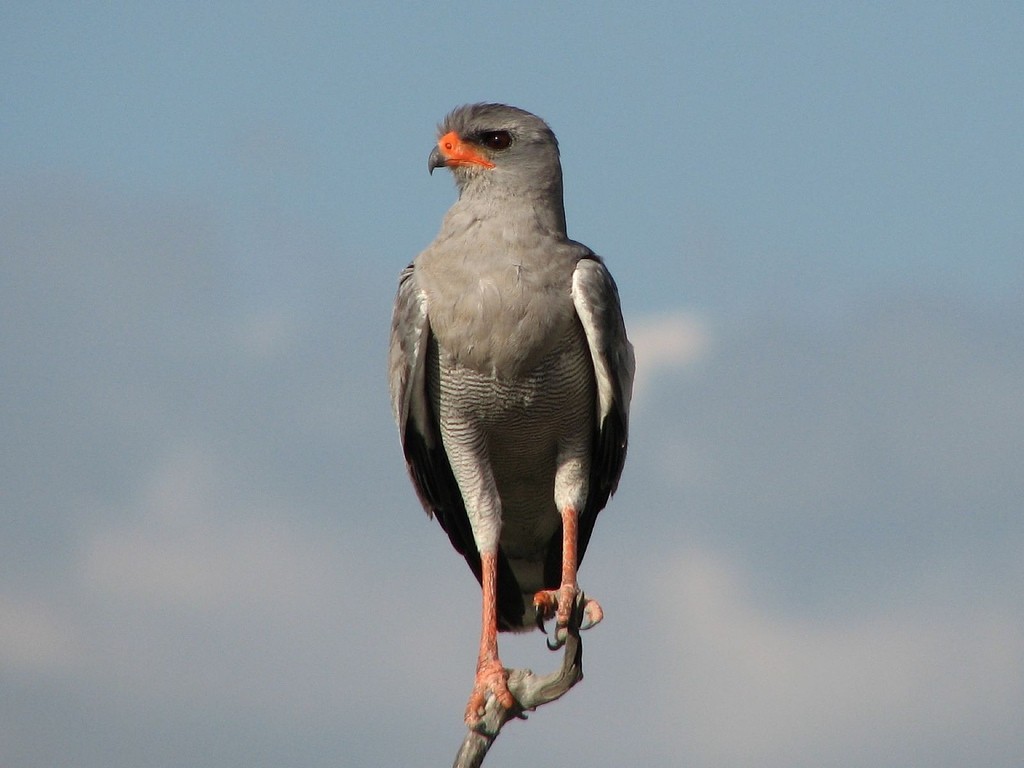Pale Chanting Goshawk
A species of Chanting goshawks, Also known as Cape Chanting Goshawk Scientific name : Melierax canorus Genus : Chanting goshawks
Pale Chanting Goshawk, A species of Chanting goshawks
Also known as:
Cape Chanting Goshawk
Botanical name: Melierax canorus
Genus: Chanting goshawks
Content
Description General Info
 Photo By Alastair Rae , used under CC-BY-SA-2.0 /Cropped and compressed from original
Photo By Alastair Rae , used under CC-BY-SA-2.0 /Cropped and compressed from original Description
This species is approximately 55 cm in length with a wingspan of 110 cm. The adult has grey upperparts with a white rump. The central tail feathers are black tipped with white and the outer tail feathers are barred grey and white. The head and upper breast are pale grey while the rest of the underparts are finely barred in dark grey and white. The eyes are dark brown in the adult and pale yellow in the immature. The bill is red at the base and dark grey at the tip. The cere, facial skin and long legs are also red. In flight, the adult has black primary flight feathers, very pale grey (white from a distance) secondaries, and grey forewings. Immatures have brown upperparts, with a white rump and black bars on the tail. From below, the flight feathers and tail are white with black barring, the throat is dark-streaked white, and the rest of the underparts are rufous. It is larger and paler than the barred-rumped dark chanting goshawk, Melierax metabates. Both sexes are vocal during the breeding season. The call is a tuneful whistling kleeu-kleeu-kleeu-ku-ku-ku usually given from a tree-top perch. 
Size
60 cm
Nest Placement
Tree
Feeding Habits
Pale Chanting Goshawk is an opportunistic raptor that feeds on small mammals, birds, lizards, large insects, carrion, and hatchling tortoises. It forages from high perches and the ground, sometimes hunting in groups or with Honey badgers to increase prey opportunities.
Habitat
Pale Chanting Goshawk typically resides in arid regions, encompassing dry thorn savanna, desert, and semi-desert landscapes with sparse tree cover or woody succulents for perching. These birds are adapted to a life in regions that are drier compared to those inhabited by their relatives. They are found up to elevations of 2000 meters and do not migrate, though they may display local movement within their habitat range.
Dite type
Carnivorous
General Info
Feeding Habits
Bird food type
Species Status
Not globally threatened.